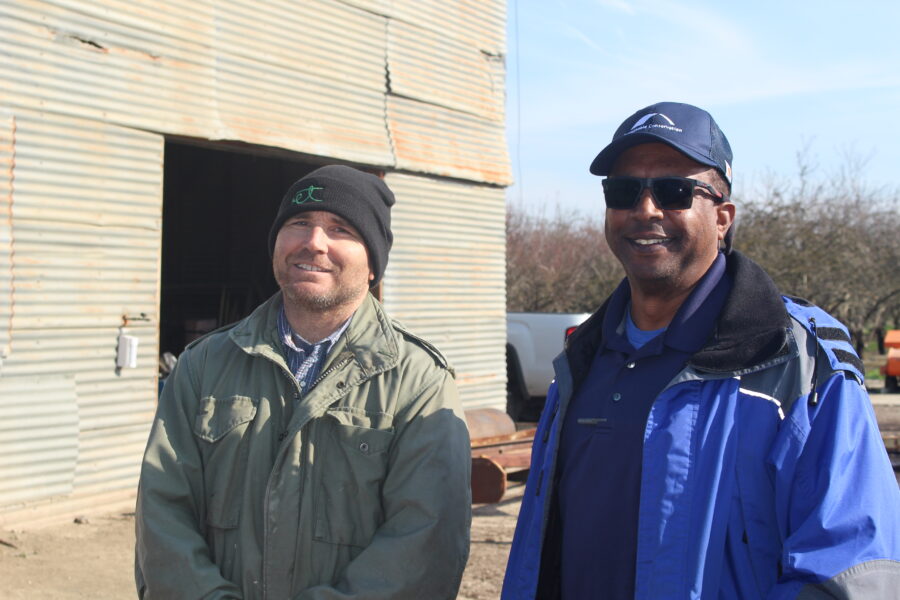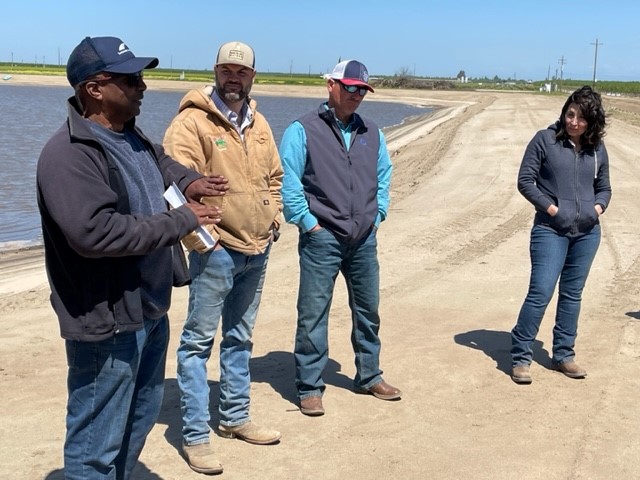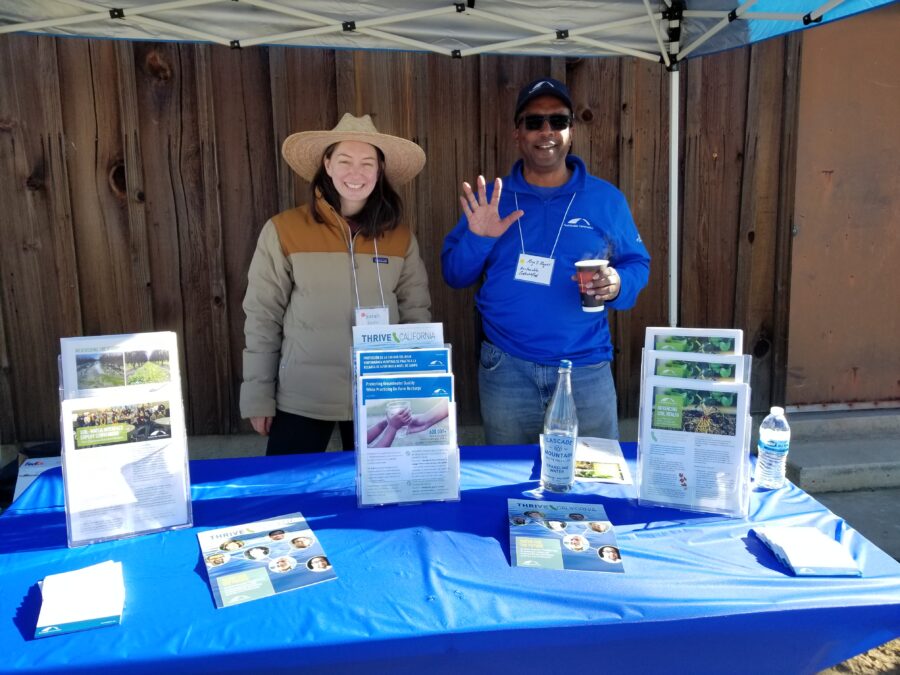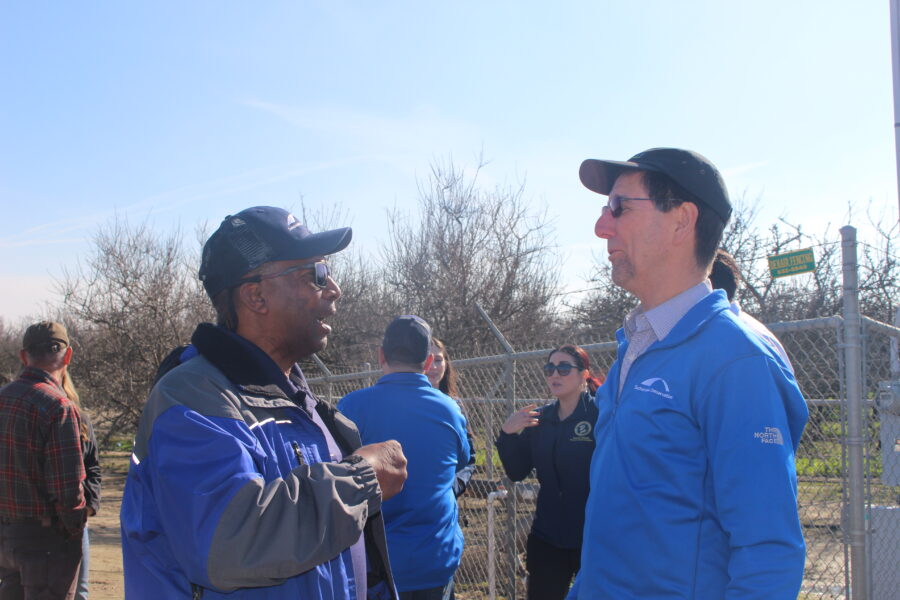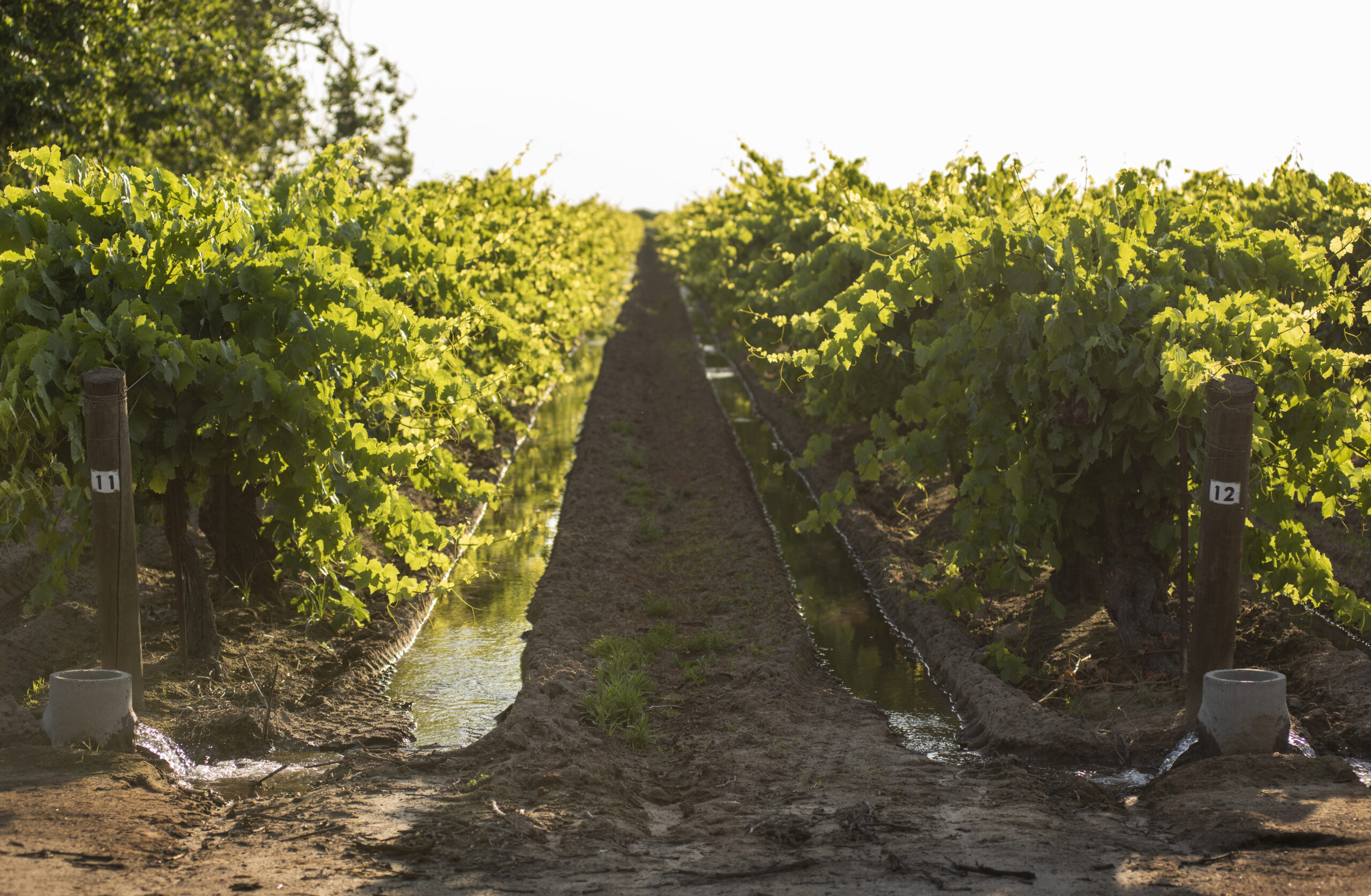
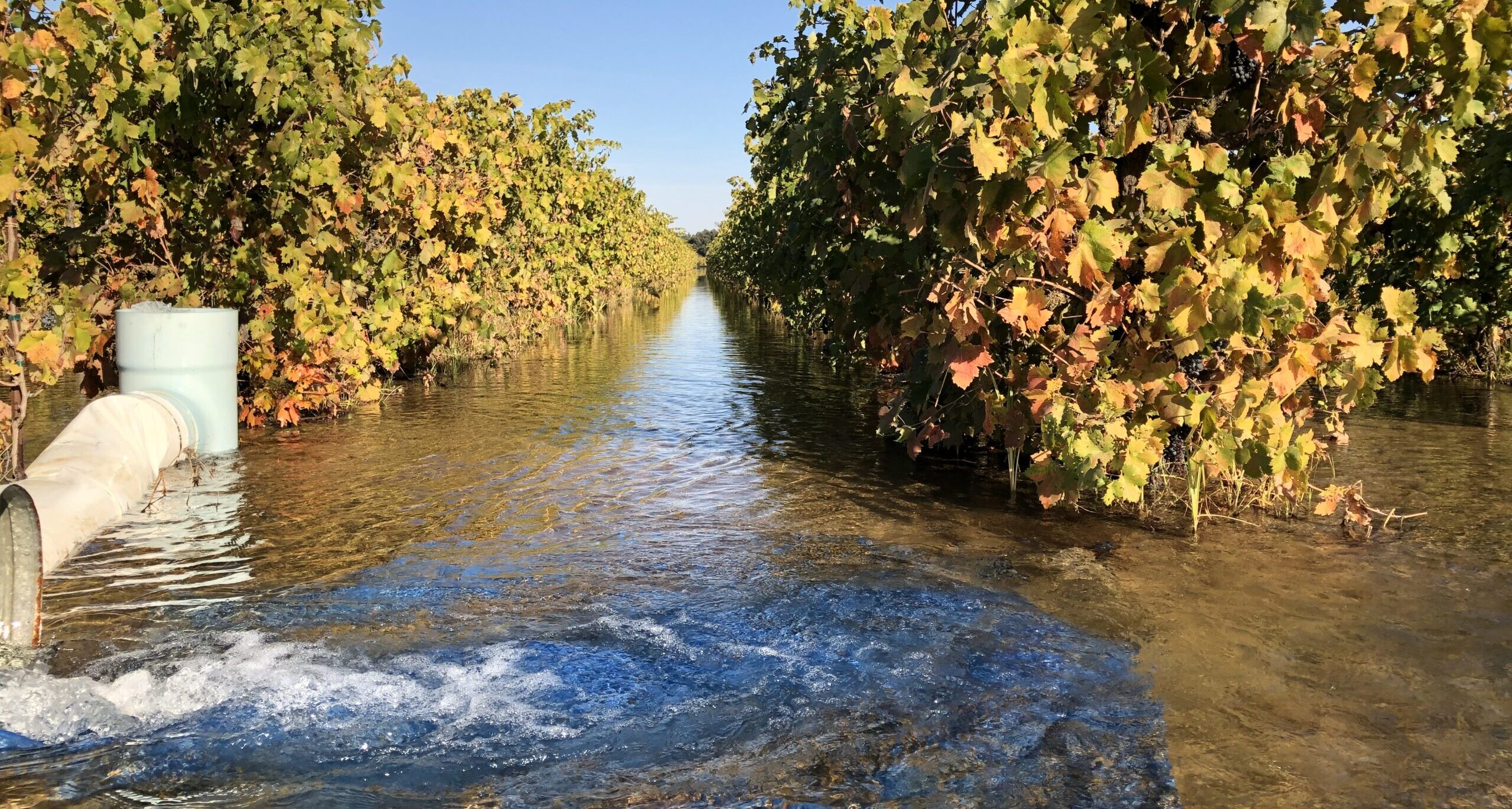
A Watershed Moment Interview Series
We’ll feature four conversations with groundwater recharge proponents across the state. Here’s our discussion with Sustainable Conservation Agronomist Rogell Rogers!
Rogell Rogers is Sustainable Conservation’s staff Agronomist, and much of his time is spent with his boots on the ground in the Central Valley. He is an expert proponent of groundwater recharge projects, and this past wet year provided him ample opportunities to facilitate on-farm recharge. While Rogell has seen every barrier, pitfall, and pain point of implementing recharge on agricultural land – he has also witnessed the practice’s promising benefits for our communities and the environment.
We sat down with Rogell to hear his technical perspective and his personal insights from the field in the wild water year that was 2023.
What makes you personally enthusiastic about working in the field on groundwater recharge projects?
Rogell: Well, I think recharge work is imperative for the longevity of California farming as you and I know it. Collaborating with farmers and helping them daily is a pleasure for me because it gives the farmers an opportunity to grab the steering wheel and take control of their destiny. That destiny lies in the farm community’s ability to step forward and do recharge. Recharge is one of the cheapest per-gallon options that we have as a community to replenish our groundwater. Every day for me is just another check of credit I give myself for being involved in the recharge effort.
It’s also very important for farmers to maintain their ability to be in business. If we don’t have, for example, at least 40 inches of water allocation for growing almonds in a season, then you might as well forget about it. As allocations decrease there’ll be fewer options, and farmers won’t be able to grow the crops they’ve traditionally farmed in California.
It’s important work, and it matters to me that the farmers take control of their destiny. In doing so, they help themselves, and they help their surrounding communities who depend on groundwater.
Grower Incentives and Risks
Could you share some of your experiences working with farmers to prepare them for groundwater recharge in such a unique water year?
Rogell: Many farmers who engaged this year understand the importance of on-farm recharge. But they do say the most important thing on their agenda now is receiving financial support to help offset paying for their infrastructure to do it. They want to contribute to replenishing overdrafted aquifers, and they understand the situation and the plight that the farm community is in.
Sustainable Conservation collaborated with Natural Resources Conservation Service (NRCS) and the Madera Field Office to launch their pilot recharge program back in March 2022. That program is a dollar incentive program that offered up to 75% reimbursement for infrastructure construction and costs related to on-farm recharge. Along with that, the Madera Irrigation District (MID) also offered an additional 15% credit on the cost of irrigation water in the following season. This is the type of program that farmers like, and the consensus is that they want to see this type of program expand. Also, they’d like to see the barriers for access decreased at the local level.
As someone who has worked so closely with so many growers, what is one aspect of their perspective that is often lost in discussions around water?
Rogell: The one thing that sticks out in my mind is that farmers are saying that they understand the urgency of the overdrafted aquifer situation. They want to do the right thing. But they really need federal, state, local officials to align their efforts so that they can.
Their situation right now is that they’re seeing a lot of increased costs from foreign import products, decreasing the market value of crop returns, and that competition has promoted overall instability in the market when they look at the returns on their investments. Some of them feel that their hands are a little tied. Their ability to invest otherwise becomes very limited when they find themselves in this crunch.
I think the important thing is for all the entities that are involved to understand that collaboration is the key component to our efforts. That’s what I want to send home. Everybody has a different perspective, of course, but all these entities need to be included in the table so that we can come to an agreement that allows us to conduct on-farm recharge without obstacles and do it in a safe manner.
Can you talk a little bit more about the importance of these relationships between irrigation districts, farmers, and local communities? How vital are these sustained relationships?
Rogell: I think recharge as a sustainable practice will be a function of local Groundwater Sustainability Agencies’ (GSAs) ability to set up incentive and recharge programs that align with state and federal efforts. For example, initially the Madera and Chowchilla area irrigation districts provided water free of charge to any growers who were willing to take on that water. That’s key. Then, promoting on-farm recharge by offering reduced fee amounts per acre feet of water used. These are incentives that turn the process. Without the alignment and collaborative work between these three or four entities from irrigation districts, GSAs, farmers, and crop advisors, none of the progress will be realized in a scaled-up version. All these groups have to align.
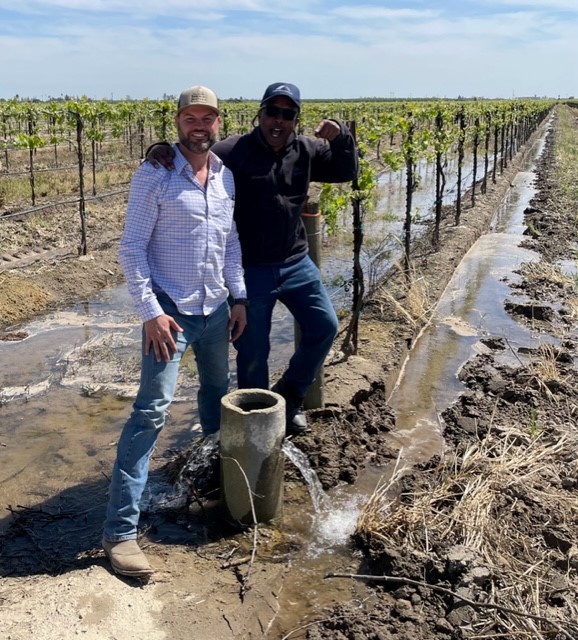
Rogell is “pumped” up to see recharge on Nick Davis’ vineyard in Madera
Practice Makes Perfect
How do you balance the due diligence of ensuring that a farm is ready for recharge with the short window that you have for executing recharge?
Rogell: Well, it’s a matter of preparation. Having the water source, water rights, and the potential timing of the water itself established. Then ensuring that all the farm conveyance pieces are in place so water can be moved from the source to the farm. In getting ahead of that surface water availability, timing is everything.
It’s so important for farmers to prepare, and then you can follow the steps with accuracy and make sure that you’re ready ahead of time. There’s a lot of coordination between the water managers and GSAs that might work in the area. If you try and do it last minute, it becomes a situation where you’re juggling too many balls to manage.
Have you seen any innovative approaches to groundwater recharge in the past couple years that you think might be gaining traction in how recharge is conducted on farms?
Rogell: Yes. Well, the biggest innovation that I have seen the past year is the work that Don Cameron’s done in Fresno County. At his Terranova Ranch, he has set up three on-farm basins that each have capacity of up to about 60 acre feet of water. That’s quite a bit of water.
Terranova is a big ranch operation, about 5,000 plus acres of various permanent tree crops, nut crops and vineyards, and annual vegetable crops. Don Cameron’s been planning this system for a decade. He has finally developed this on-farm basin system with this capacity of up to 180 acre feet storage at one time.
Then plumbing conveyance to redistribute that to all the acres that they have at the ranch in addition to offering the water at cost to his neighboring farmers in need of that water on a recharge basis. The system that he has is the most massive, concerted effort that I witnessed so far.
He just started experimenting with recharge himself on a small-plot basis. Then he eventually tried it on fallow fields and permanent crops that were dormant or off season not producing. From there, it’s grown each year.
That’s a fantastic anecdote. I think it really speaks to the constant innovation in recharge and demonstrates the multi-benefit aspect of recharge.
Rogell: Yeah. These sites are, according to Don Cameron, drawing a host of wildlife to visit and spend time in and around the water. It’s one out of many multiple benefits like reducing flood risk, flood mitigation, and of course replenishing our groundwater. He’s a model for all of us in California agriculture when it comes to recharge.
What goals do you have for expanding the reach and the impact of groundwater recharge efforts in California?
Rogell: Currently the water team is focused in on the Merced County recharge efforts and moving throughout the San Joaquin Valley. We’re trying to cover all of California, in particular the San Joaquin areas that are critically overdrafted.
We’re focused on multi benefit projects that, for example, stack sustainable practices such as on-farm recharge at a site that has been integrated with cover cropping. Then seeing and measuring how cover crops benefit soil health and enhance soil permeability, and eventually maximize net water returned to the aquifer.
We’re looking at getting the maximum multi-benefit out of a given project. This is something that I’m eagerly pursuing with potential pilot work. We’re trying to do this very thing with almond and pistachio growers.

